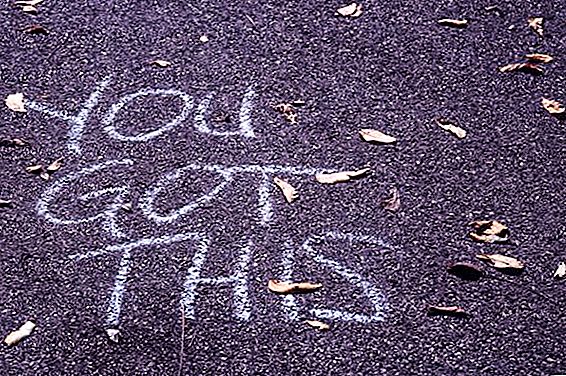A typical reaction to fear is to by all means avoid a frightening object, forget about it, stop thinking. However, in doing so, we do not solve the problem, but only evade its solution. Fears must be met face to face, analyzed and deprived of a paralyzing effect. Writer and investor Tim Ferris, in his presentation, offers a technique for working with fears that will help to stop being afraid and take action.

The technique of working with fears, which will allow you to stop being afraid and take action, consists of three stages.
Step 1. Evaluate Fear and Its Consequences
Take a blank sheet of paper and head it: “What if I […]?” - instead of the ellipsis, insert what scares you. For example, “What if I go on this date?”, “What if I ask the boss for a promotion?”, “What if I don’t pass this exam?”
Divide the sheet into three columns:
- "Define." Identify and write down in a column all kinds of terrible consequences of your frightening step. Write as much as possible to take into account all the negative consequences that your imagination portrays.
- "Prevent." In this column, for each item from the first, answer your question: "What can I do to prevent this from happening or to minimize the likelihood?" Write down all your possible actions for each punk from the first column.
- "Fix it." If you are unable to prevent the frightening consequences from column 1, then consider how you can correct what happened. What steps to take, from whom to ask for help? Think over and write down your possible steps if, nevertheless, each of the unpleasant events from the first column occurs.
Tim Ferris advises: “When working on the first page, it is important to answer the question for ourselves: is there anyone in the history of mankind, less intelligent and less motivated, who has already dealt with this problem?” You will probably understand that the answer to this question is "Yes."
Working with your fear on the first page, you will gain confidence in yourself: even in the event of an adverse outcome, you can cope with the problem, and life will not end there.
Stage 2. Evaluate the positive aspects of the intimidating action.
Take the second sheet of paper and head it: "What benefits will I get if I try to do what scares me?" Even if failure awaits you, what will the attempt give you? Maybe new experience and skills, new knowledge about yourself, your action will contribute to self-development, will bring emotional or financial benefits?
Tim Ferris advises to devote about 10-15 minutes to this stage. Think about it.
Stage 3. Determine the price of inaction
Take the third sheet of paper and head it: "The price of inaction." This stage is very important, it cannot be skipped. When we are afraid, it seems to us that the main thing is to avoid a collision with a threatening situation, and then life will get better. But is it?
Divide the sheet into three columns:
- The cost of inaction after 6 months.
- The price of inaction after 1 year.
- The price of inaction after 3 years.
Write in each column what your life will be like if you still do not dare to do what you are afraid of? What will it be in six months, in a year, in three years? Try to delve into the details, honestly assess the consequences of your inaction on your life. Look at your life in the future from a physical, emotional, financial, social point of view.
Most likely, the picture is not very attractive. After all, when we are afraid of something, it means not only that we feel threatened. But also that we want to overcome it. And if this is not done, then we lose the chance for positive changes, for growth, for the improvement of our lives.
